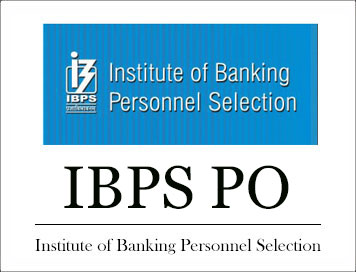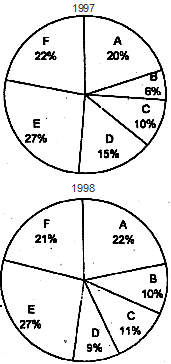Model Questions for IBPS PO PRELIM Exam : Quantitative Aptitude Set-53

Model Questions for IBPS PO PRELIM Exam : Quantitative Aptitude Set-53
Directions: Each of the equations below consist of a question and three statements denoted A, B and C are given below it. You have to study the questions and all the three statements and decide whether the question can be answered with any one or two of the statements or all the statements are required to answer the question.
1.What is R’s share of profit in a joint venture?
(A) Q started a business investing Rs. 80000
(B) R joined him after 3 months
(C) P joined after 4 months with a capital of Rs. 1,20,000 and got Rs. 6,000 and
his share of profit.
(1) Only A C are required
(2) Only B and C are required
(3) All A, B and C together are required
(4) Even with all A, B and C the answer cannot be arrived at
(5) None of these
2.What is the area of a right-angled triangle?
(A) The perimeter of the triangle is 30 cm.
(B) The ratio between the base and the height of the triangle is 5 : 12.
(C) The area of the triangle is equal to the area of a triangle of length of 10
cm.
(1) Only B and C together are required
(2) Only A and B together are required
(3) Only either A or B and C together are required
(4) Only A and C together are required
(5) None of these
3. What is the sum of two numbers?
(A) The bigger of these two number is 6 more than the smaller number.
(B) 40% of the smaller number is equal to 30% of the bigger number
(C) The ratio between half to the bigger number and one-third of the smaller
number is 2 : 1.
(1) Only B and C together are required
(2) Only A and B together are required
(3) Any two of A, B and C together are required
(4) All A, B and C together are required
(5) None of these
4. How many marks did Arun get in English?
(A) Arun secured an average of 60 marks in four subjects including English.
(B) He secured a total of 170 in English and Mathematics together.
(C) He secured a total of 180 in Mathematics and Science together.
(1) All A, B and C together are required
(2) Only A and B together are required
(3) Only B and C together are required
(4) Only A and C together are required
(5) None of these
5. What was the profit earned on the cost priced by Mahesh by selling an article?
(A) He got 15% concession on labeled price in buying that article.
(B) He sold it for Rs. 3,060
(C) He earned a profit 2% on the labeled price.
(1) Only A and B together are required
(2) Only B and C together are required
(3) Only either A or C and B together are required
(4) Even will all A, B and C the answer cannot be arrived at
(5) None of these
Buy Printed Study Material for IBPS PO Exams 2017
IBPS PO Exam Books
Directions: Study the following graph carefully and answer the questions given below:
Percentage of Difference Types of Employees in a Company in two successive years
Total No. of Employees in 1997 and 1998 is 42,980 and 48,640 respectively

6. The number of a type employee in 1998 was approximately what percentage of A type employees in 1997?
(1) 115
(2) 140
(3) 125
(4) 130
(5) 95
7. If there were 5,000 D type employees in 1998, what would have been its approximate percentage in the company?
(1) 8
(2) 12
(3) 14
(4) 16
(5) 10
8. In the case of which of the following types of employees was there maximum change in the number from 1997 to 1998?
(1) B
(2) D
(3) C
(4) A
(5) None of these
9. Appropriate, what was the difference, in the number of B type employees between 1997 and 1998?
(1) 2285
(2) 2325
(3) 2085
(4) 2620
(5) 1825
10. The total number of which of the following pairs of types of employees in 1997 was appropriate equal to A type employees in 1998?
(1) B and C
(2) A and C
(3) D and E
(4) C and D
(5) C and F
